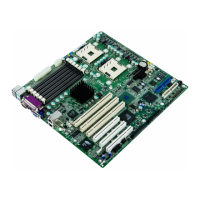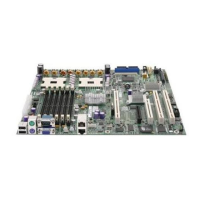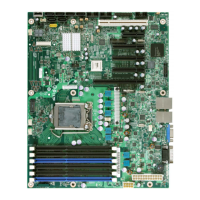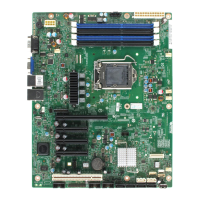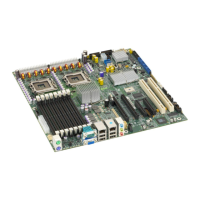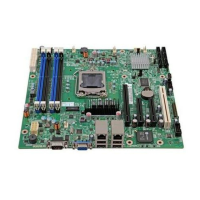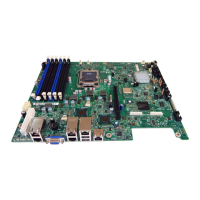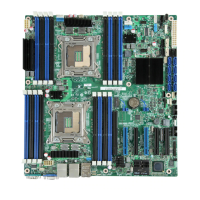SE7500CW2 Server Board Technical Product Specification System BIOS
33
Revision 1.40
installed and the type, size, speed, and memory attributes found on the on-board EEPROM or
Serial Presence Detect (SPD) of each DIMM.
The memory system is based on rows. Since the SE7500CW2 server board supports dual
channel memory, DIMMs must be populated in pairs with the same size. This means two DIMMs
are required to constitute a row. Although DIMMs within a row must be identical, the BIOS
supports various DIMM sizes and configurations allowing the rows of memory to be different.
Memory sizing and configuration is guaranteed only for qualified DIMMs approved by Intel.
The memory-sizing algorithm determines the size of each row of DIMMs. The BIOS tests
extended memory according to the option selected in the BIOS Setup Utility. The total amount of
configured memory can be found using INT 15h, AH = 88h;
1
INT 15h, function E801h;
2
or INT
15h, function E820h.
3
Refer to Section 1.1 for other nonstandard INT 15h functions supported by
the system BIOS.
Because the system is designed to support up to 8 GB of memory, the BIOS creates a hole just
below 4 GB to accommodate the system BIOS flash, APIC memory, and memory-mapped I/O
located on 32-bit PCI devices. The size of this hole depends upon the number of PCI cards and
the memory mapped resources requested by them. It is typically less than 128 MB.
6.2.1.3 ECC Initialization
Because only ECC memory is supported, the BIOS will need to initial the ECC before using it.
The BIOS will initial the E7500 chipset Hardware scrubbing function to initialize the ECC
function. While initializing base memory, the BIOS must cover the SMRAM and shadow area
(0c000h – 0fffffh).
Note: ECC memory initialization cannot be aborted and may result in a noticeable delay,
depending on the amount of memory in the system.
6.2.1.4 Memory Test
Memory can be classified as base memory or extended memory. Base memory is defined as
the part of memory that is required for early BIOS code. Typically, 1 MB of memory is used for
this. Most of the BIOS code and data is stored in a compressed form inside the BIOS flash and
is decompressed into the base memory. The base memory must be available before the BIOS
can stack or shadow itself.
Extended memory is the memory above the top of base memory (1 MB through the total
memory size). Extended memory may be contiguous or it can have one or more holes.
The memory test consists of two steps: a base memory test and an extended memory test. The
base memory test must be run before video is initialized. The video provides a key visual
indication that the system is functional, so enabling video as early as possible during POST is a
priority. It is possible to test the entire memory in one step, but the memory test and initialization
1
INT 15h, AH=88h can report a maximum of 64 MB of contiguous memory.
2
INT 15h, function E801h can report a maximum of 4096 MB of contiguous memory.
3
INT 15h, function E820h can report up to 2
65
–1 bytes of memory including non-contiguous memory regions.

